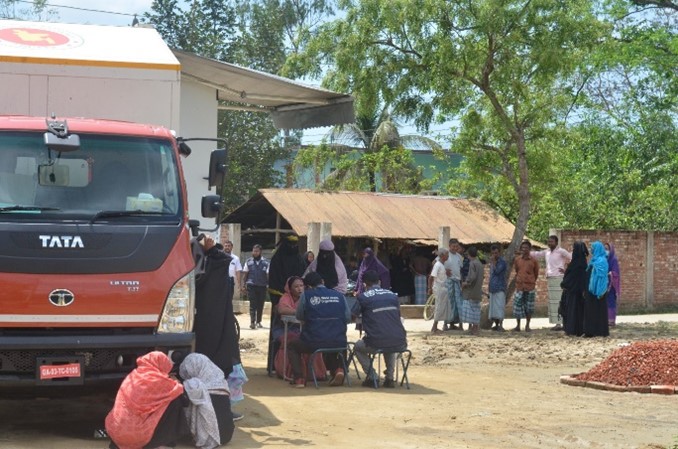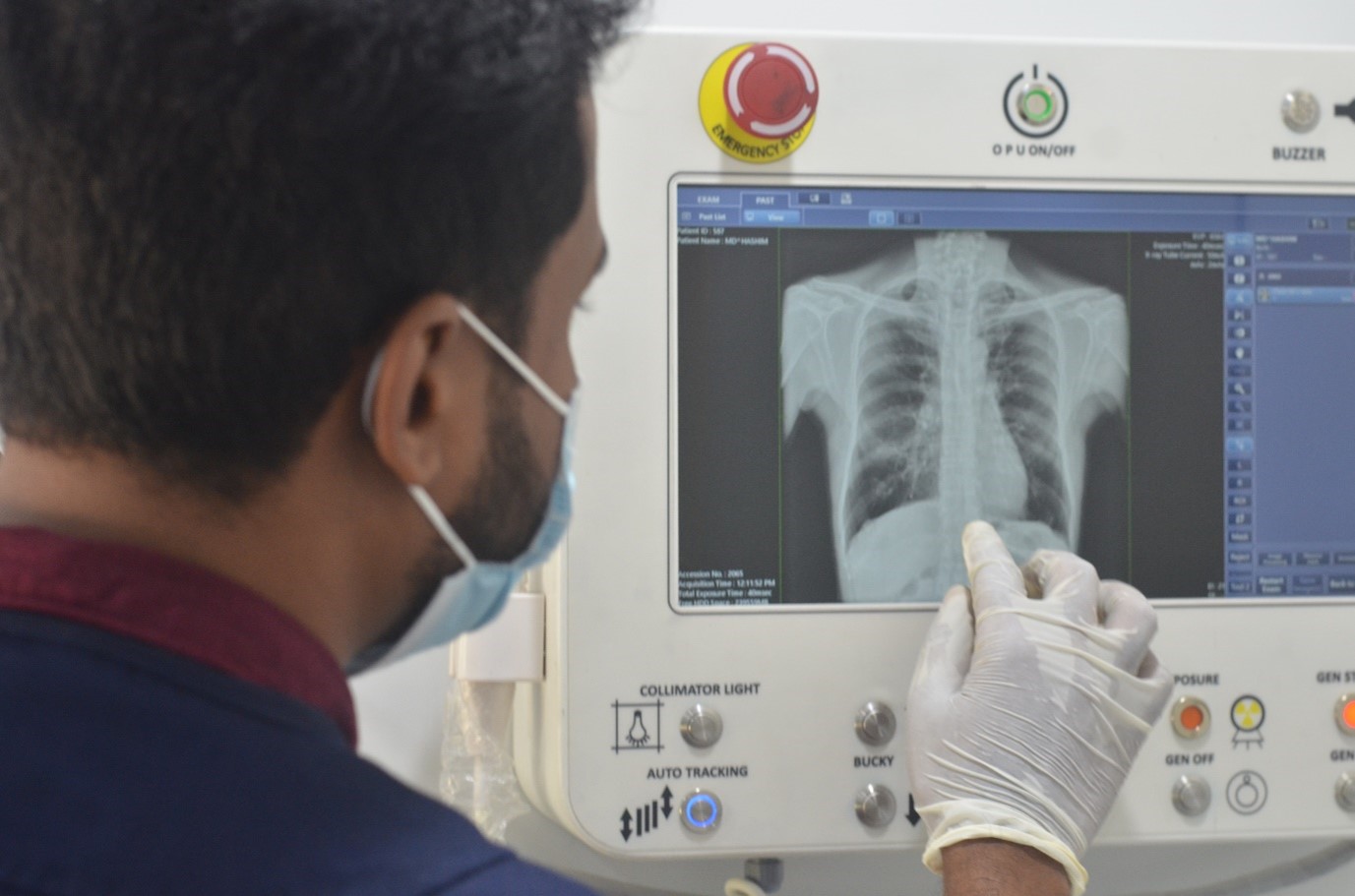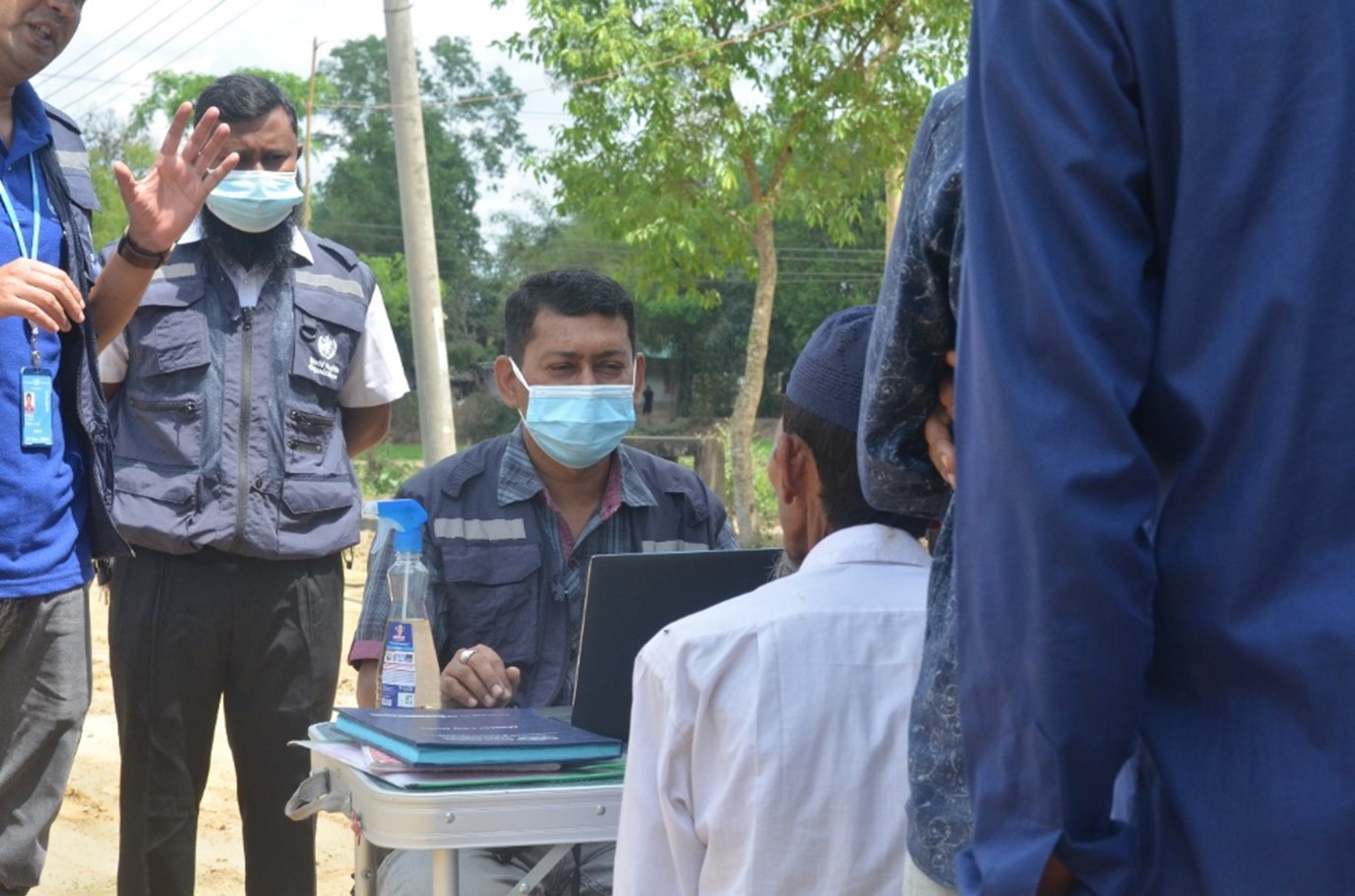WHO-mobilized TB vans play an instrumental role in fighting the disease in hard-to-reach communities.

The mobile diagnostic vans can visit hard-to-reach communities in Cox’s Bazar, helping to spot and control the spread of TB. Photo credit: WHO/James Carmichael
Tuberculosis (TB) is both preventable and curable. Despite this, over 1.5 million people die of the disease every year, making it the world’s top infectious killer after COVID-19. To support the UN’s commitment to ending the global TB pandemic, WHO Bangladesh has launched two new mobile vans to serve hard-to-reach areas of Cox’s Bazar. Equipped with the latest laboratory diagnostic facilities and aided with artificial intelligence, these two vans brought TB diagnostics services to people who don’t have access to this service. This initiative has broken the chain of transmission within communities.
The invention is an additional step in the National TB Programme (NTP) spearheaded by the Government of Bangladesh and supported by WHO. Led by the Ministry of Health and Family Welfare, NTP provides TB diagnosis and treatment services for free to all citizens to end TB in Bangladesh.
The vans will contribute to the Ministry of Health and Family Welfare’s plans to scale up early diagnosis for unreached populations and coordinate them with localised efforts. They’re also instrumental in providing TB services to the displaced Rohingya population and their host community in Cox’s Bazar.
“Case detection amongst suspected cases is critical in the fight against TB”, says Dr Sabbir Ahmed, TB Focal Point for WHO Emergency Sub Office. He also adds, “the vans enable us to bring public health services to the doorsteps of those in need. With this, easy to test the suspect cases, and possible to avail treatment from nearby government health facilities much faster.” This initiative was supported by the World Bank through the Ministry of Health and Family Welfare, Government of Bangladesh.

The vans provide instant TB testing facilities such as radiography and molecular diagnosis with artificial intelligence-aided interpretation of the findings. Photo credit: WHO/James Carmichael
WHO estimates that, in 2021, over 10.6 million people fell ill with TB worldwide. It’s particularly dangerous for people with weakened immune systems who sometimes struggle to fight off the disease. TB is easily treated with a combination of antibiotics. In hard-to-reach areas like Cox’s Bazar, it can often go untreated due to a lack of willingness to visit health facilities. Failure to spot symptoms of TB in underserved communities increases the risk of transmission due to the highly infectious nature of the disease.
the global TB epidemic is a key policy of the UN’s Sustainable Development Goal 3: Good Health and Well-being. By 2030, the World Health Organization wants to see a 90% reduction in TB deaths and an 80% reduction in TB cases.
Mobile care for everyone
The two new diagnosis vans are equipped with digital radiography units that provide communities access to x-ray services. They also have GeneXpert machines that allow molecular diagnosis of Tuberculosis. Each van is fully staffed with trained TB staff who use artificial intelligence tools to spot the key symptoms of the disease. When cases are identified early, health interventions can break the chain of transmission and stop repeat infections.
The mobility of the units also means that TB teams can be flexible in where they deliver services, going directly to areas of need, particularly places with challenging terrain. This is also important for the Rohingya communities in Cox’s Bazar who may have limited mobility within the camps.
The Rohingya themselves are particularly vulnerable to the disease, given that both Bangladesh and Myanmar are among the world’s 30 most TB-affected countries. Cramped living conditions in the camps contribute to higher transmission of TB. BRAC has established eight TB laboratories in the camps to facilitate timely identification and short-course therapies to treat the confirmed cases. Testing samples are processed at the local Upazila Health Complexes.
Using these facilities, the health sector has managed to ensure successful TB treatment across the camp with a national TB cure rate of 95%.
The WHO Representative to Bangladesh, Dr Bardan Jung Rana emphasises the importance of a collaborative approach to TB programming in Cox’s Bazar.
“We need a whole-society approach to stopping Tuberculosis. That means WHO must work closely with the Government, humanitarian partners and, crucially, communities themselves to provide the best possible standards of care. The end of TB in Bangladesh is in sight. But it depends on our ability to come together as one nation to stop it once and for all.”

TB field staff are trained to spot suspected cases of TB and refer them for diagnostic confirmation before initiating treatment. Photo credit: WHO/James Carmichael
